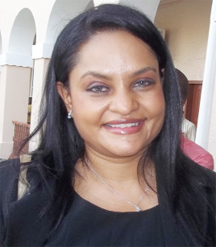Deaths among neonatals and children under five years dropped continually from 526 in 2014 to 184 in 2017 with Region Four (Demerara/Mahaica) recording the highest fatalities yet with a significant reduction, according to preliminary data from the Statistical Unit of the Ministry of Public Health.
Public Health Minister Volda Lawrence made this revelation in a written response to questions from PPP/C MP Vindhya Persaud, pertaining to infant and child health. Lawrence gave a breakdown of fatalities among neonatals, infants and five-year olds.
In 2014 Region Four recorded the deaths of 112 neonatals and 133 infants, the highest in the four-year period. In 2015 the region recorded 17 five-year olds deaths, the highest among the four years. The lowest deaths, 11, among the three groups for the period, were recorded in Region Nine (Upper Essequibo/Upper Takutu).

Asked what measures were put in place to ensure that all neonatal intensive care units (NICUs) are properly equipped and functioning, Lawrence said, support is being given to the NICU team to visit health facilities twice a year.
The Helping Babies Breathe programme, she said, is an ongoing initiative to provide the requisite skills to manage new born babies and to stabilise children in distress.
The NICUs of the Georgetown Public Hospital Corporation (GPHC) and the West Demerara Regional Hospital, she said, will benefit from an Inter-American Development Bank (IDB) loan which will assist in the purchase of equipment.
The implementation of a perinatal information system, she said, would also assist with data management.
Lawrence acknowledged that many areas in the health system need improvement hence Government’s continued efforts to ensure universal access and coverage.
To decrease the inequities in primary health care between the coastland and hinterland, she said, “It is our target that every hospital would have specialists to the areas of paediatrics, surgery and obstetrics-gynaecology and this has already begun.”
Asked about the status of the Child Morbidity and Mortality Committee, Lawrence said the term of the current committee, which was formed in June 2014 and whose term was extended to the end of August 2018, has expired.
In terms of reporting child morbidity and mortality, Lawrence said regional health officers and the Director of Medical Services of the GPHC report all deaths of neonatals, children under five years and maternal deaths to the Chief Medical Officer who then shares the information with the relevant authorities for review.
Asked if the committee has made recommendations and if any have been implemented, Lawrence said, it has recommended more training of staff for the time of labour and delivery and for the completion of “the ALARM” course by all public health care medical doctors and nurses.
On testing for sterility in the NICU, she said, there is no guideline at the GPHC which stipulates that environmental sterility checks must be done routinely. Checks are done when nosocomial (originating in the hospital) organisms are identified so that the source of transmission can be addressed.
For June 2017 to December 2017 blood culture bottles were available 100 per cent of the time, but from January 2018 to June 2018 they were available for only 39.2 percent of the time, Lawrence said.
The multi-drug resistant Klebsiella pneumoniae was isolated at the GPHC, Lawrence said in response to one of the questions from Persaud. Nineteen samples out of 578 blood cultures – between June 2017 and June 2018 shown the multi-drug resistant organism.
When certain medications were not available for such infections, she said, others were used.
On whether any cause of death was due to iatrogenic (relating to illness caused by medical examination or treatment) infection, she said, it was difficult to determine the time of infection of a baby since infections in newborns occur prenatally, perinatally or postnatally. No cause of death due to iatrogenic infection was identified at the GPHC though sterility checks found nosocomial organisms through patient cultures and appropriate actions were taken to sanitise the NICU.
The current nurse to patient ratio in the NICU is 1 to 4. Sixty-nine specially-trained paediatric nurses work in the Ministry of Public Health and 21 trained NICU nurses are attached to the GPHC.
Of 473 admissions to the NICU at the GPHC, 69 were referred from other institutions.
The NICU is often overcrowded, Lawrence said, and the GPHC cannot refuse sick babies.
The NICU at the GPHC has 11 incubators of which five are in use and working while six are kept as spares.
A total of 10 incubators and six ventilators, a donation from Guyana Help the Kids, were added since May 11, 2015. Two biomedical technicians and two biomedical engineers maintain the incubators and ventilators, she said.
At present there are four of seven functioning incubators in Region Two (Pomeroon/Supenaam), all five are working in Region Two (West Demerara/Essequibo Islands), five of eight in Region Six (East Berbice/Corentyne), zero of four in Region Seven (Cuyuni/Mazaruni) and all four working in Region Ten (Upper Demerara/Upper Berbice).






